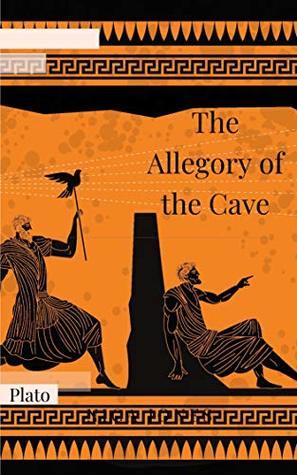
Plato:
On Appearance and Reality
Plato:
On Appearance
and Reality
Best Viewed in Landscape
Edited transcript of
audio excerpt from
Jesus: Symbol and Reality
Dr. Kenneth Wapnick
I’d like to digress briefly a minute to put in a plug for one of my favorite people, Plato. While I don’t think it’s mandatory that any student of the Course have read Plato or even know about Plato, I don’t think it hurts, especially if you have an intellectual bent. In the book I wrote many years ago, Love Does Not Condemn, part of the purpose of that book was to show how the thought system of the Course really falls within the whole Platonic or neo-Platonic stream of thought that really is, I think, one of the most significant ones in our western world. And Plato was the first one to have talked about and wrestled with the problem of appearance and reality. And a lot of what you find in the Course is really an extension of his monumental work. Perhaps one of the most famous parts of Plato’s work is the allegory of the cave. Many of you have heard me speak of it before. And actually, there are two specific references in the Course to it, and several other indirect ones. Just let me tell you the allegory quickly.
Its setting is a cave, in which there are a group of prisoners who are chained, and they’re chained in such a way that they’re not able to look behind them, to the mouth of the cave. They’re only chained in such a way that they can look into the interior, so all they see is the back wall of the cave. And in back of them is the mouth of the cave, and beyond the mouth of the cave is a road. And on the road is where everyday commerce occurs. People walk back and forth. And behind the road is a fire, and then behind the fire is the sun, which is the ultimate source of the light. Because the prisoners cannot see what’s in back of them, all they see are the shadows that are cast on the interior wall of the cave. And they believe that what they are seeing—which in truth are shadows of the reality in back of them—they believe that that is the reality. That the black-and-white figures that come and go across the back wall of the cave—that’s what reality is.
At some point, and Plato never explains how it happens, he just says it happens, one of the prisoners is freed. And then Plato, in his description of it, tells how over a course of some time, because there’s a process, the prisoner begins to adjust his eyes to the light, because he turns around, and he suddenly recognizes there’s something else. That reality is not this cave wall with these shadows walking back and forth, or seemingly walking back and forth. That reality is outside of the cave. And so he slowly makes his way up to the entrance of the cave, and then beyond the cave. And once again, it takes awhile until his eyes can adjust, and he realizes what he is seeing. And then his eyes open at last fully and he recognizes that the world is just a shadow and that the truth is behind or beyond the cave.
He then feels called to go back into the cave to awaken his fellow prisoners and bring them the glad tidings that the world that they are perceiving and experiencing and believing to be real is really an illusion—it’s an appearance. And the reality is beyond them. As the story concludes, the prisoner, who is a clear symbol of Socrates, who was Plato’s teacher—the freed prisoner awakens all the chained prisoners, unchains them, tells them the glorious truth, and as most of you know, they kill him.
Plato goes on to make the analogy with Socrates even more clear to his readers, and of course, Socrates, as most of you know, was killed by the good people of Athens because he was “corrupting the morals of the young” which he was doing by teaching them the truth. And basically Plato, who was a young man at the time and clearly very devoted to Socrates, basically then spent the rest of his life in developing a systematic philosophy based upon Socrates’ teachings. Socrates wrote nothing. So everything we know about Socrates we get from Plato. And actually, in the dialogues of Plato, Socrates really becomes the central figure in many of them. And he’s the one who does all the questioning of his fellow citizens and brings out the truth through what Plato called the dialectical method of teaching.
Basically, the whole Course can be seen as an elaboration of the allegory of the cave. Indeed, one can see that Jesus’ life, at least the life that we’ve been told about, is a good representation of the allegory of the cave. He, too, was one of the freed prisoners. He was the one whose eyes fully awakened, and then when He came to tell everybody else the good news, they did to him—again, at least what the stories tell us—they did to him what was done to Socrates. One in fact could make the same case with the Course. That people are trying to crucify the Course and poison its teachings just as they did with Socrates and Jesus and many other people throughout history, because we’re all afraid of the light. We’ve become so accustomed to the world of shadows.
Many of you know that important section in the text on special relationships called “Shadows of the Past.” (T-17.III) That we live in a world of shadows, projections of our own unconscious past—of our past which is unconscious—and we then see everything through the projected lens of what is secretly inside of us. Except we don’t remember that it’s inside of us. And so we see outside what is really inside. But we believe it is outside and that’s where the reality is. And yet what we are perceiving is simply a shadow of what is inside.

